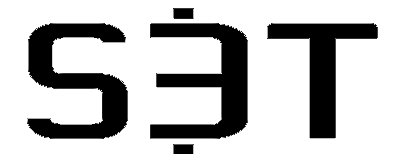S3T Playbook: Flip the Script: Understand and change unhelpful narratives

Narratives define our default thinking and reactions and have a heavy influence on our daily decisions at both personal and macro levels. A few minutes learning how to understand and change narratives can save months of churn and friction.
Our minds are adept at creating "scripts" - internal narratives and automatic responses that dictate what we think, say, or do in specific conversations, decision points, or opportunities. These scripts often form our immediate reactions and impulses in conversations and decisions.
We curate these scripts - both at individual and industry levels. You personally have a set of scripts that guide your snap judgments and reactions. Your industry also has scripts that guide conventional wisdom and status quo thinking in that industry.
When we follow these scripts without question we put ourselves, our companies and our communities at risk of negative outcomes.
We want to learn how to be aware of our internal scripts and update/replace them as needed.
This learning segment will help you build the skills to:
- Identify your common, go-to scripts
- Evaluate whether these scripts lead you to the behaviors and outcomes you want
- Notice where new scripts might be needed, and create them.
Let's get started!
Identifying Your Scripts
There is a world of good in starting to understand what your scripts are – even though it may take time. The roadmap:
- Start noticing what your common go-to scripts are
- Start evaluating whether they take you to the behaviors and outcomes you want
- Start creating new scripts.
Some examples of negative but quite common scripts or internal narratives that people carry with them:
- When I get feedback it just proves to me that I'm really not up for this job.
- When others get praise or attention, it just reminds me that I'm not really part of the team.
- I dread status or review meetings, because I know they'll just reveal my shortcomings."
Notice that in each case there is an underlying pattern of interpreting the situation as a threat vs an opportunity.
Tip: To uncover one your scripts, ask yourself questions in this format:
- When I see/hear/experience _____ then I automatically think/feel/say/do _______.
- Whenever _____ happens, I always assume it must be because ______.
Evaluating your Scripts
When you have identified your scripts you can use the following questions to evaluate them:
- How does this thought / script manifest in my thinking, speaking and actions?
- How is it true or not true? How bad would it be if I just decided to assume the opposite about the situation?
- What is the benefit of thinking this, and acting on it? What kinds of outcomes occur when I think/speak/act in in accordance with this script?
- How could I edit this script to make it more accurate or helpful?
- If I have a new script, or newly updated / refined script, how can I put it into practice, or practice it more consistently?
By dissecting these questions, you can begin to understand how deeply internalized scripts affect our interactions and decision-making processes.
Understanding and updating these scripts is not just about self-improvement; it's about enhancing how we communicate and interact within groups and organizations, so we can get to better outcomes!
What about Industry Scripts?
Scripts exist not only on personal levels, but also exist at macro levels: orgs, industries, nations. Think about the conventional wisdom, commonly accepted rules of thumb, and mental models in your industry or in the economy.
At a macro policy or industry level the issue of scripts involves two kinds of problems:
- Scripts that are non-existent or still forming: The accelerated evolution of emerging tech and innovation means that we increasingly find ourselves in uncharted territory - where we don't have well formed scripts. It's all so new. We may even misapply old scripts that don't work in these new contexts.
- Scripts that are just plain wrong: Economics - macro and industry level - is a grab bag of scripts that are flawed, mainly because of their non-scientific and biased origins. Our conventional wisdom about how the economy supposedly works reinforces behaviors that future generations will hate us for: systematically deleting nature's capacity to sustain humanity, persisting chaotic unaffordable healthcare, protecting the parasitic banking class at the expense of everyone and everything else, etc.
In other words, we need to learn how to thoughtfully create or update the scripts that guide our thinking and actions at an industry level. This is perhaps the toughest part of the change leader's job. Understanding the unhelpful, invalid scripts that drive decisions and behaviors, and finding ways to replace them, not only in our own personal thinking, but also in the collective thinking and actions of our organizational decision makers and macro level policy makers.
A Common Scenario
Consider this example:
- Person A proposes a beneficial change that will increase our competitive advantage and provide better customer care, but the change will also challenge the status quo and push us out of our comfort zones.
- Person B responds, "Well, that's a nice idea, but we have to be practical."
What is the common script in most people's minds right at that moment?
Practicality looks and feels smart. Practicality is safe. We better stick with practicality.
At this point in the conversation, most people in the room will nod in agreement with Person B and say something like "Yeah we better stick with what's practical". Then - based on nothing more than a commonly held mental script - the group will retreat into the status quo rather than create beneficial change.
What's a good way to flip the script in this situation?
When faced with the "We have to be practical" script, an alternative response could be: "Practical for WHO? For us and our comfort zones? Or practical for our customers? What we put them through right now isn't very practical for them!"
This response challenges the prevailing script and opens up a dialogue that might lead to more innovative and customer-focused decisions.
Q&A: Common questions when putting this into practice
How can I identify deeply ingrained scripts within my organization that may be hindering innovation or growth?
Start by conducting a series of open conversation / feedback sessions. Encourage employees at all levels to share their thoughts on what assumptions and behaviors are taken for granted within the company.
Tip: Listen for versions of this common meme: "We always (repeated futile behavior). It's just the (insert your company name here) way." For example if your company is named XYZ, you might hear "We always take on too many projects, its just the XYZ way."
Anonymous surveys can encourage candid responses, but may lack context. Sometimes it's better if senior leaders find creative ways to spend time in working on the front lines, back offices and customer facing roles of the company. There is usually a LOT of insight that is not getting shared at the senior leadership level. It get's lost/filtered out. Analyze recurring themes to pinpoint which scripts are prevalent. A few practical steps:
- Organize focus groups with a cross-section of employees to discuss existing norms and behaviors.
- Deploy anonymous surveys with specific questions about decision-making processes, response to change, and daily work obstacles.
- Conduct a thorough review of the data collected to identify common scripts and assess their impact on the organization.
What practical steps can I take to help my team develop new, more adaptive scripts that align with our organizational goals?
Number one tactic: Lead by example. Openly discuss and question your own scripts and biases in team meetings. Facilitate workshops that focus on critical thinking and scenario planning, encouraging employees to think outside of existing frameworks and consider alternative responses.
- Implement regular training sessions that challenge conventional thinking and promote innovative problem-solving techniques.
- Encourage role-playing exercises that allow team members to practice responses to various scenarios.
- Set up a reward system that recognizes and celebrates employees who demonstrate flexibility in their thinking and problem-solving.
Can you provide examples of successful organizations that have shifted their internal scripts for better outcomes?
Research case studies from companies like Apple, which famously shifted its script from simply a computer company to a leader in innovative consumer electronics with the launch of the iPod and iPhone. Similarly, look at companies like Netflix, which transitioned from DVD rentals to streaming services, fundamentally changing the entertainment distribution industry.
- Access business journals and publications that feature case studies on organizational change.
- Attend industry conferences or webinars where leaders discuss strategic shifts and cultural transformations.
- Integrate these insights into strategic planning sessions to inspire and motivate your team towards embracing new scripts.
What methods can be used to measure the effectiveness of changing these scripts on organizational performance and employee engagement?
Implement both qualitative and quantitative measures to assess the impact of script changes. Qualitative data can come from employee feedback and observations, while quantitative data might include performance metrics and engagement scores.
- Before implementing changes, establish baseline metrics for performance and engagement.
- After introducing new scripts, conduct follow-up surveys and assessments at regular intervals to track changes.
- Use tools like employee net promoter scores (eNPS) to gauge engagement and satisfaction levels pre and post change.
- Analyze productivity and performance trends to correlate changes with the introduction of new scripts.
Further Reading
These books provide deeper insights into the automatic, intuitive processes that shape our thoughts and actions, and offer strategies to help us become more aware of our biases and make more thoughtful, deliberate decisions.
- Thinking Fast and Slow by Daniel Kahneman - a comparison of two ways our minds work: the fast, intuitive and emotional way of thinking and the more deliberate logical way of thinking.
- Predictably Irrational by Dan Ariely - delves into why irrationality often underlies the choices we make.
- Blink by Malcolm Gladwell - exploration of our unconscious thought processes and snap judgments.
- Nudge by Richard Thaler and Cass Sunstein - How to present choices in a way that helps people choose what is best for themselves or their society. Applicable to flipping the script at both personal and macro level.
Click here to continue go to the next learning segment: Identifying economic mental models and their flaws:
This next learning segment examines the evolution of economics and prepares change leaders to address cases where individuals or companies are resisting necessary change - or even opposing their stated mission - under the guise of financial necessity.
